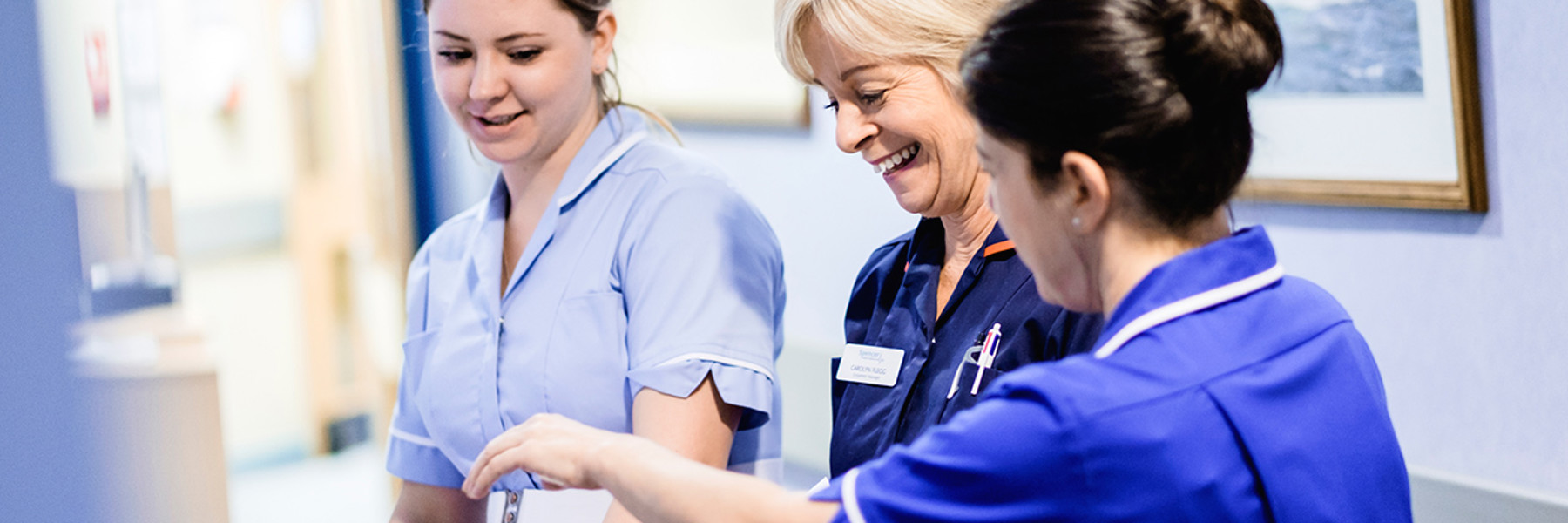Colposcopy
What is a Colposcopy?
A Colposcopy is a procedure to find out whether there are abnormal cells on or in a woman's cervix and is often done if abnormal cells are detected during a cervical screening. During the procedure a microscope with a light is used to observe the cervix and liquids are applied to highlight abnormal cells. Should any abnormal cells be present, the Consultant will be able to identify them and take a small sample of tissue (biopsy) to send away for further analysis.
What happens after a Colposcopy?
After having a Colposcopy you'll be able to go home as soon as you feel ready, which is usually straight away. You can resume normal activities such as driving and going back to work immediately although you may prefer to rest until the next day.
The Consultant may be able to tell you when they found it straight away however if a biopsy was taken it will be sent to a laboratory for testing and you will receive your Colposcopy results by post. Wait until bleeding has stopped before resuming sexual activity or using creams, vaginal medicines or tampons.
Treatment to remove abnormal cells
If abnormal cells are detected and it's deemed there is a moderate to high risk of them becoming cancerous if left untreated and it is often recommended to have them removed.
There a several effective treatments that can be used to remove these cells, including:
Large loop excision of the transformation zone (LLETZ) - In this procedure a heated wire loop is used to remove the abnormal cells. This procedure is usually carried out under local anaesthetic and you're able to go home the same day.
Cone biopsy - In this procedure a cone-shaped piece of tissue containing the abnormal cells is cut from the cervix. A cone biopsy is usually carried out using a general anaesthetic (you're put to sleep) and you may need to stay in the hospital overnight.
What happens after a Colposcopy?
After having a colposcopy you'll be able to go home as soon as you feel ready, which is usually straight away. You can resume normal activities such as driving and going back to work immediately although you may prefer to rest until the next day. The consultant may be able to tell you when they found straight away however if a biopsy was taken it will sent to a laboratory for testing and you will receive your results by post. Wait until bleeding has stopped before resuming sexual activity or using creams, vaginal medicines or tampons.
Treatment to remove abnormal cells
If abnormal cells are detected and it's deemed there is a moderate to high risk of them becoming cancerous if left untreated and it is often recommended to have them removed.
There a several effective treatments that can be used to remove these cells, including:
- Large loop excision of the transformation zone (LLETZ) - In this procedure a heated wire loop is used to remove the abnormal cells. This procedure is usually carried out under local anaesthetic and you're able to go home the same day.
- Cone biopsy - In this procedure a cone-shaped piece of tissue containing the abnormal cells is cut from the cervix. A cone biopsy is usually carried out using a general anaesthetic (you're put to sleep) and you may need to stay in the hospital overnight.
FAQs
A Colposcopy is a very safe procedure with minimal risk of any serious problems.
You may however experience some side effects which are as follows:
- Pain or discomfort - If you experience any pain or discomfort make the Colposcopist aware so they can try and make you more comfortable.
- Brown vaginal discharge - This is caused by the liquids used to highlight abnormal cells in the cervix and should pass quickly.
- Light bleeding - This can occur if a biopsy is taken and shouldn't last longer than 3-5 days.
A Colposcopy is a short procedure that usually takes around 15-20 minutes.
There is usually no need for extensive preparation before a Colposcopy, but it’s advised to avoid scheduling the procedure during menstruation.
You may be asked to avoid using tampons, vaginal creams, or having sexual intercourse for 24 hours before the procedure.
You will be asked to lie down in a position similar to a pelvic exam, and the speculum will be inserted to keep the vaginal walls open. The microscope will not touch your body, and the Consultant will apply a special liquid to the cervix to highlight any abnormal cells. You may experience slight discomfort or a tingling sensation.
You should wait between 24-48 hours to have vaginal sex after a colposcopy or until bleeding stops if you had a biopsy. Contact your doctor or Consultant if you experience heavy bleeding or have any other concerns.
After a colposcopy you may have some mild pain, similar to period pain, for a few days. Taking a painkiller such as paracetamol can help.
Some other aftercare tips include:
- Expect light bleeding or discharge: It's normal to experience light bleeding or brownish discharge, especially after a biopsy. This should clear up in 3-5 days.
- Avoid sex and tampons: Wait until the bleeding stops before engaging in sexual activity or using tampons, vaginal medications, lubricants, or creams.
- Limit strenuous activity: Refrain from intense exercise for at least a day following the procedure.
- Stay out of the water: Avoid swimming pools and hot tubs until you've fully healed.
